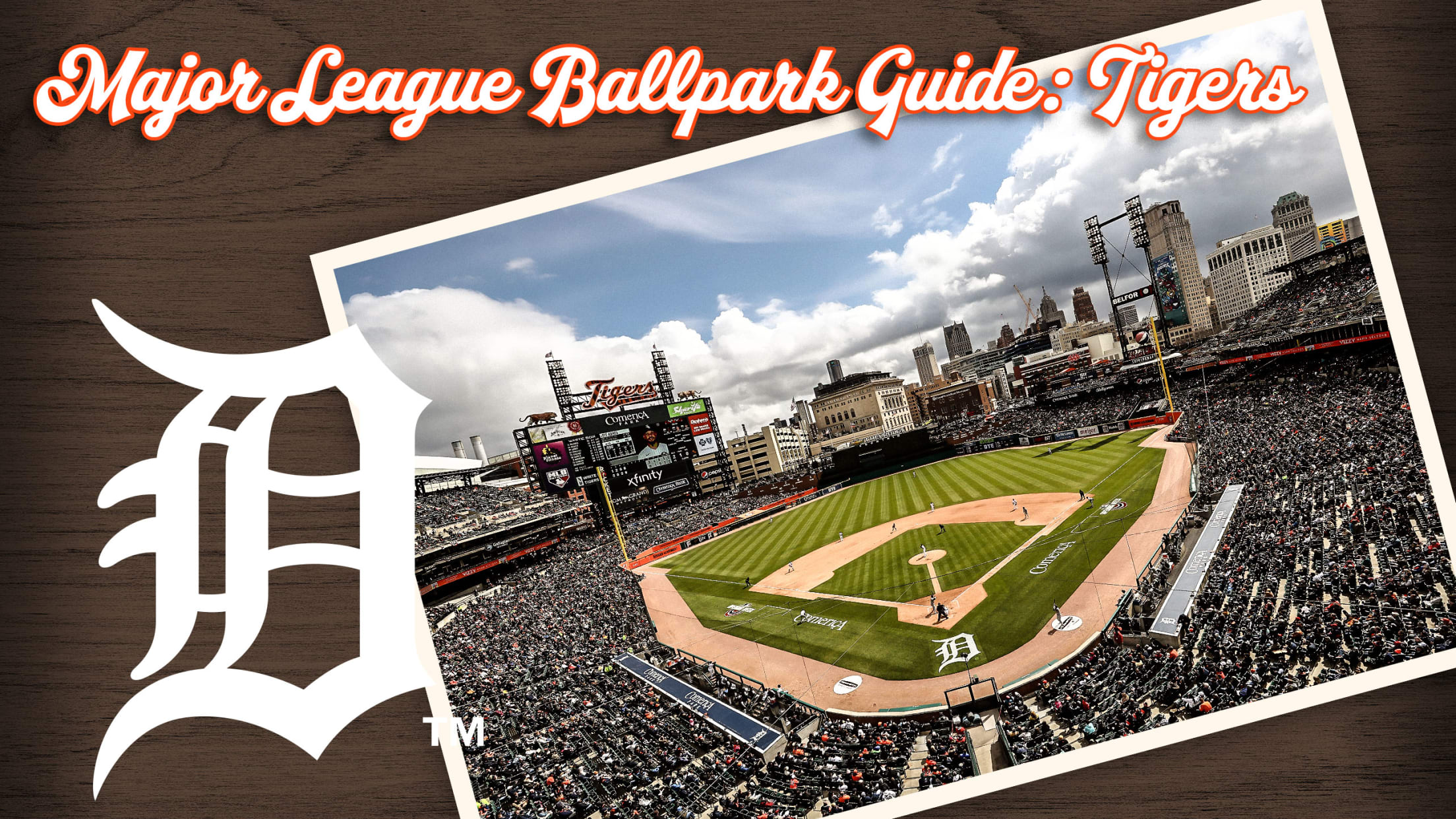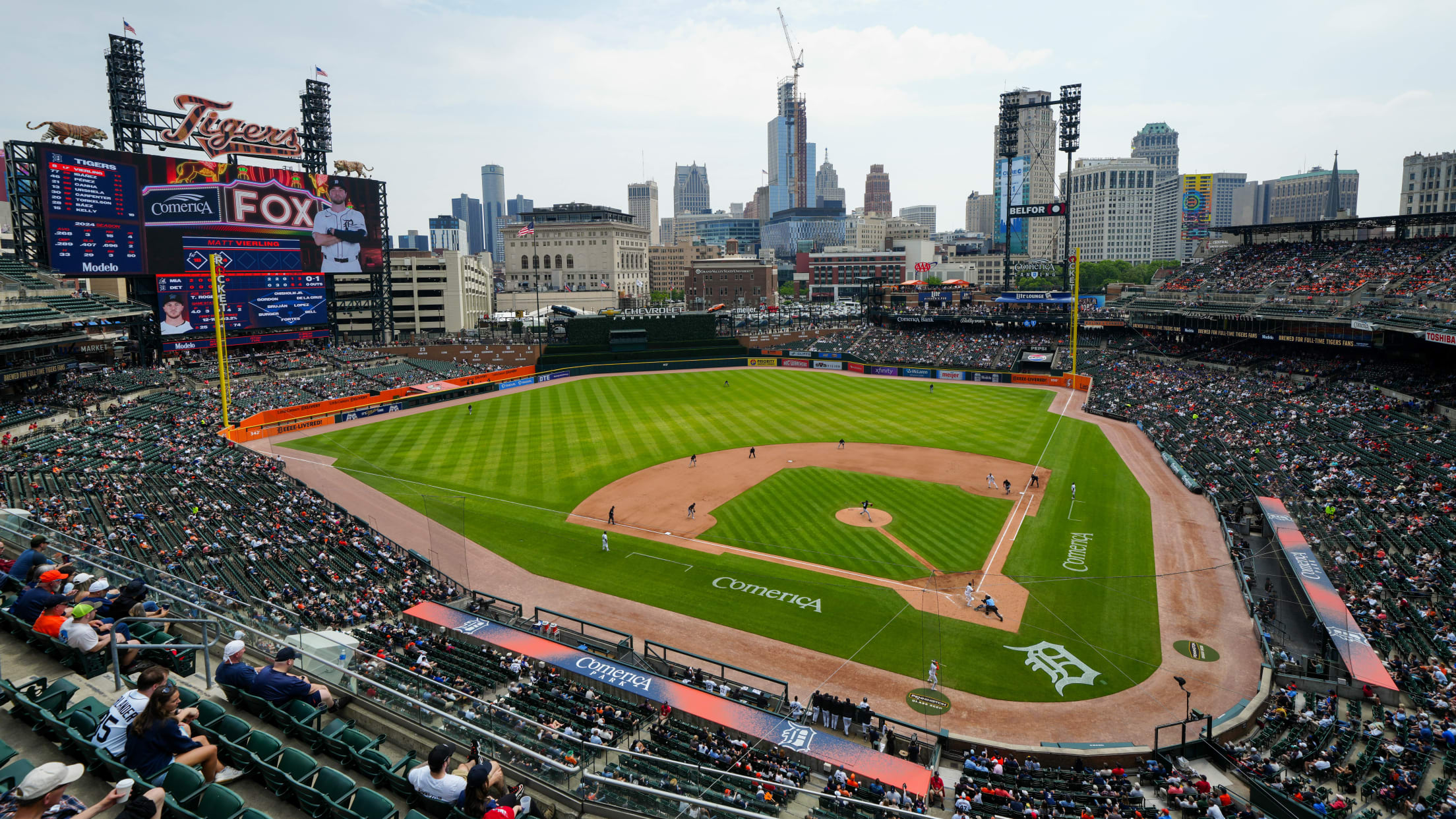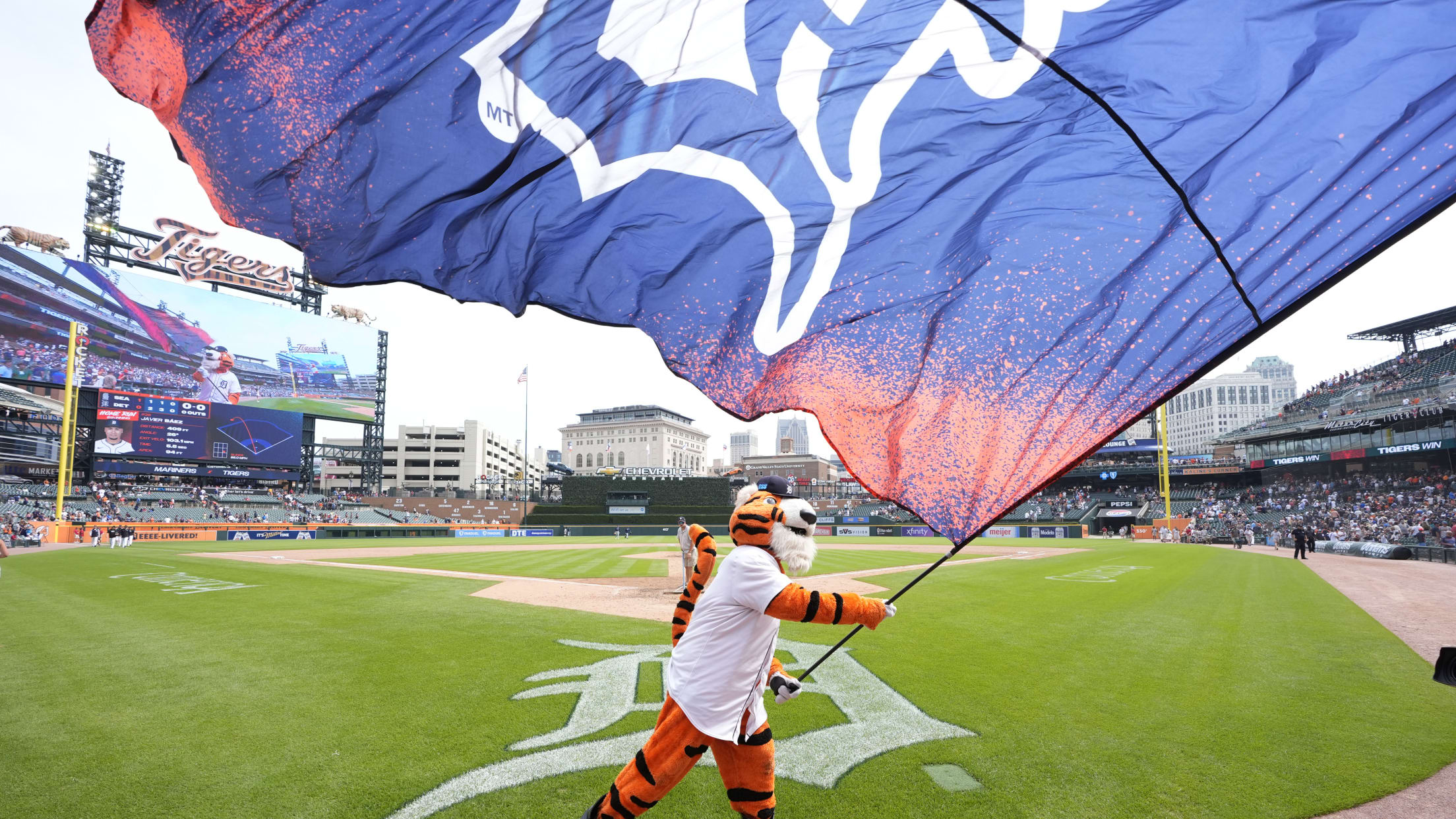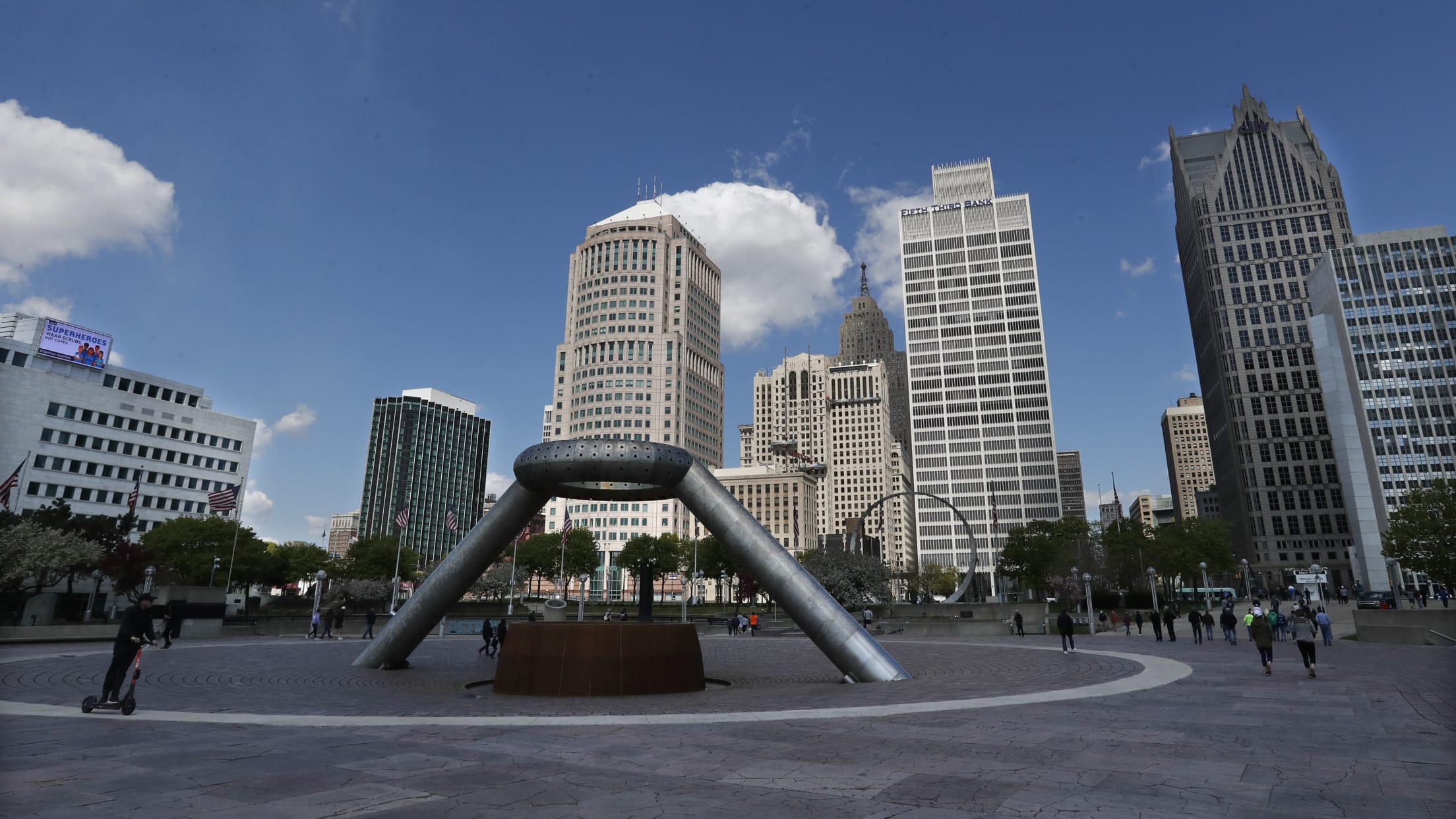
Explore Comerica Park, home of the Detroit Tigers

For over a century, Detroit had pro baseball in the Corktown neighborhood southwest of downtown. The Tigers began play in the fledgling American League at the corner of Michigan and Trumbull Avenues at what was known as Bennett Park, which opened in 1896. That wooden ballpark was demolished in 1911 to make room for a steel structure known as Navin Field, named after owner Frank Navin. That became Briggs Stadium after an ownership change and ballpark expansion, then found its calling as Tiger Stadium, the team’s home through 1999.
Given that history, owner Mike Ilitch’s decision to build a new ballpark on the northern edge of downtown was not universally welcomed, even though it fit with Ilitch’s grand vision of a downtown renaissance. Comerica Park’s vastly different, open style and vibe from Tiger Stadium created an adjustment for fans used to the old ballpark’s smaller, more enclosed dimensions. Once the Tigers built a winner on the field in the mid-2000s, fans warmed to the experience of games at the park known to some as “CoPa.”
Detroit Tigers
Established: 1901 (founding member of American League)
American League Central
Ballpark: Comerica Park (opened 2000)
A generation later, an afternoon at Comerica Park is now a fixture in the Michigan summer experience.
Comerica Park also served as the first project in what has become a triumvirate of venues that serve as home to Detroit’s four major pro sports teams. Across the street, construction began on Ford Field six months before Comerica Park opened, and the domed stadium welcomed the NFL’s Detroit Lions back downtown in 2002. On the other side of Interstate 75, Little Caesars Arena opened in 2017, paired with Comerica Park and Fox Theatre to form what is known as The District Detroit development. The NHL’s Detroit Red Wings and NBA’s Detroit Pistons play at LCA. Only Philadelphia can boast all four major sports teams playing in so close of an area, and their stadium district is well south of downtown. The venues share parking around and in between them, allowing for fairly easy access driving in. It’s not unusual for two, or sometimes all three, venues to host events on the same day, creating a chance for fans to make a day of their visit if they plan ahead and avoid the potential traffic.
Comerica Park
Ballpark location (via Google Maps)
Tigers schedule
Tigers roster
2100 Woodward Avenue
Detroit, MI 48201
Capacity: 40,988 (as of 2024)
Dimensions: Left field, 342 feet; left-center, 370 feet; center field, 412 feet; right-center, 365 feet; right field, 330 feet
Park factors (2022-24)
100 = league average
Runs: 96 | Homers: 86 | Hits: 98

Features
Walk along Comerica Park’s concourse behind home plate, or venture to the upper deck, and the view of Detroit’s skyline is awe-inspiring. The ballpark was aligned to put downtown Detroit on display, and downtown’s revitalization in the quarter-century since then has only made it more beautiful. The glimmering spiral of the Renaissance Center’s main tower is a sight in the distance beyond center field, but the construction of the new Hudson Tower has provided another landmark beyond right-center. Look out beyond straightaway center, and you’ll notice the historic Detroit Athletic Club, where members can look in on the game from the rooftop patio. The Broderick Tower beyond right field became famous for a mural of whales swimming in the ocean, one of Michigan-born artist Wyland’s famous Whaling Walls painted in the 1990s.
Within the ballpark, the ivy-covered batters eye beyond center field includes water fountains and pyrotechnics coming out of top, along with pedestals on either side showcasing new-model cars. The fountain has been sponsored by General Motors and then Chevrolet, but when the auto crisis hit Detroit’s Big Three automakers in 2008-09, Mike Ilitch used the fountain to showcase all three companies along with a message of the Tigers’ support. There’s a walkway behind the fountain.
Also along the center-field concourse, the Tigers honor six of their all-time greats -- Ty Cobb, Charlie Gehringer, Hank Greenberg, Willie Horton, Al Kaline and Hal Newhouser -- with stainless steel statues atop granite pedestals. The six statues correspond with the greats’ names and retired numbers along the brick wall behind the seats in left-center field. Tigers Hall of Famers Alan Trammell, Jack Morris and Lou Whitaker also have their names and numbers displayed along the wall. Other Hall of Famers, including George Kell, manager Jim Leyland and broadcaster Ernie Harwell, have their names on the wall in right-center.
The appreciation of the Tigers’ history as a charter American League franchise is evident all along the main concourse, including a Walk of Fame displaying artifacts on display from various decades through the more than century of history. The Tigers honor Miguel Cabrera’s Triple Crown season of 2012 along the concourse behind home plate.
Also hard to miss beyond Comerica Park’s spacious outfield is the giant video board in left. At 15,000 square feet, it ranked second-largest in the Majors when it was expanded in 2024. The electronics include a mighty sound system pumping in music and sound effects. The Tigers opened a sensory room around section 210 for fans who need some quiet time.
Walk around the park, and you’ll find a 50-foot baseball-themed Ferris Wheel on the third-base side, and a carousel near the right-field entrance, allowing kids to ride atop decorative Tigers.
The second-deck patio, known as Comerica Landing, beyond right field has featured a restaurant and a bar over the years. It has become a social area in recent years, including pre- and post-game parties and an overhead view of the action.
Concessions
The Tigers have widened their menu well beyond the typical ballpark offerings, teaming up with Detroit-area eateries to give a diverse taste of the city. Little Caesars Pizza is available throughout the park. Individual stands feature everything from nachos to popcorn to hot honey chicken tenders to cheesesteak sandwiches to cheesesteak hot dogs to Dippin’ Dots. The Big Cat Court near the main entrance includes spots for smash burgers, pulled pork, beef brisket, turkey legs, black bean burgers, Beyond Burgers, veggie dogs, ice cream pretzels and a hummus plate. Grab-and-go market areas include pierogi grilled cheese sliders, grilled chicken wings and street corn nachos along with hot dogs and fries.
Looking for sit-down food? The Corner Taproom has a special menu featuring a bacon burger, Andalusia sausage and other elevated offerings. The Tiger Den and Tiger Club lounges are premium areas featuring specialty items.
The Tigers have done a tremendous job of welcoming Detroit-based eateries to bring their offerings to the park in rotating pop-up stands. Especially on summer weekends, it’s worth taking a walk around to see what Detroit delicacy might be making a special appearance.
Mascot
The Tigers went nearly a century without a mascot before PAWS made his debut at Tiger Stadium in the 1990s. The furry supporter has become such a beloved presence for kids and adults that it’s difficult to imagine a Tigers game without him. Look for him wandering around the stands during the game, then on top of the dugout during the seventh inning stretch to lead the crowd in Take Me Out to the Ballgame.

Local attractions
Travel and Leisure named Detroit among its 50 Best Places to Travel in the world for 2025, noting the incredible growth and energy around the city as it blends rich history with innovation. Walking around downtown allows visitors to see the bustle of Woodward Avenue, the beauty of Campus Martius Park, the riverfront splendor of Hart Plaza and the new Riverwalk trail, the history and food of Greektown, and an array of dining all over.
Venture around the city, and you can see the renovation of the old Tiger Stadium ball field and the surrounding Corktown neighborhood, the similarly ambitious renovation of the Michigan Central train station into a commercial hub, the natural beauty of Belle Isle along the Detroit River, the artistic beauty in the massive collection of the Detroit Institute of Arts, one of the nation’s oldest remaining Negro League parks in the newly-restored Hamtramck Stadium, the Motown Museum in the New Center area and the irresistible eateries of Mexicantown in Southwest Detroit. Keep an eye out for the various murals adorning buildings around the city, featuring some of Detroit’s most famous spots in popular culture (even Magnum PI and Robocop).
The Metro Detroit area features the Henry Ford Museum and Greenfield Village in Dearborn, the nationally renowned Detroit Zoo in Royal Oak, and parks galore. Cross the Detroit river at the Ambassador Bridge or Windsor Tunnel and experience the beauty of Windsor, Canada.

Food and drink
Detroit has seen a proliferation in great dining around the city, from the fancy to the functional. Within walking distance of Comerica Park is the Woodward corridor and District Detroit, featuring Union Assembly, Mom’s Spaghetti (named after Eminem’s reference in Lose Yourself), Frita Batidos and Hudson Cafe. Down the street, Central Kitchen has become a downtown staple in a short time, while Townhouse Detroit and Prime and Proper are fine-dining attractions. Parc gives diners a chance to take in the sights of Campus Martius Park while having dinner.
Detroit is famous for its Coney Island hot-dog spots, led by neighbors and rivals American Coney Island and Lafayette Coney Island. Down Michigan Avenue, the Corktown neighborhood is home to Slow’s BBQ, a city staple, along with Mercury Burger and historic Nemo’s Bar near the site of Tiger Stadium. From there, venture into Mexicantown for some of the city’s best-kept dining secrets, including historic Mexican Village restaurant. Bucharest Grill, located around the city, captures Detroit’s love of shawarma along with classic Romanian dishes and Middle Eastern concepts.
Michigan is also home to some of the nation’s top craft breweries, many of which have locations in Detroit. Atwater Brewery has a tap house just east of downtown.